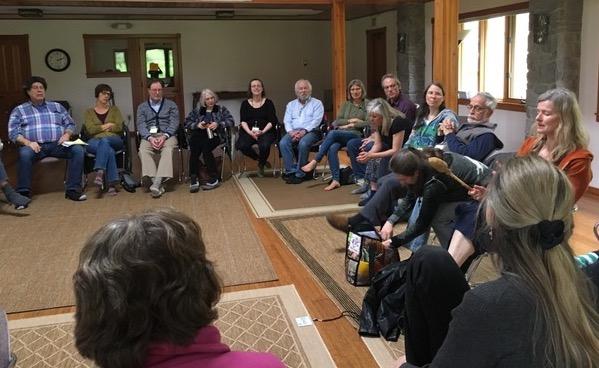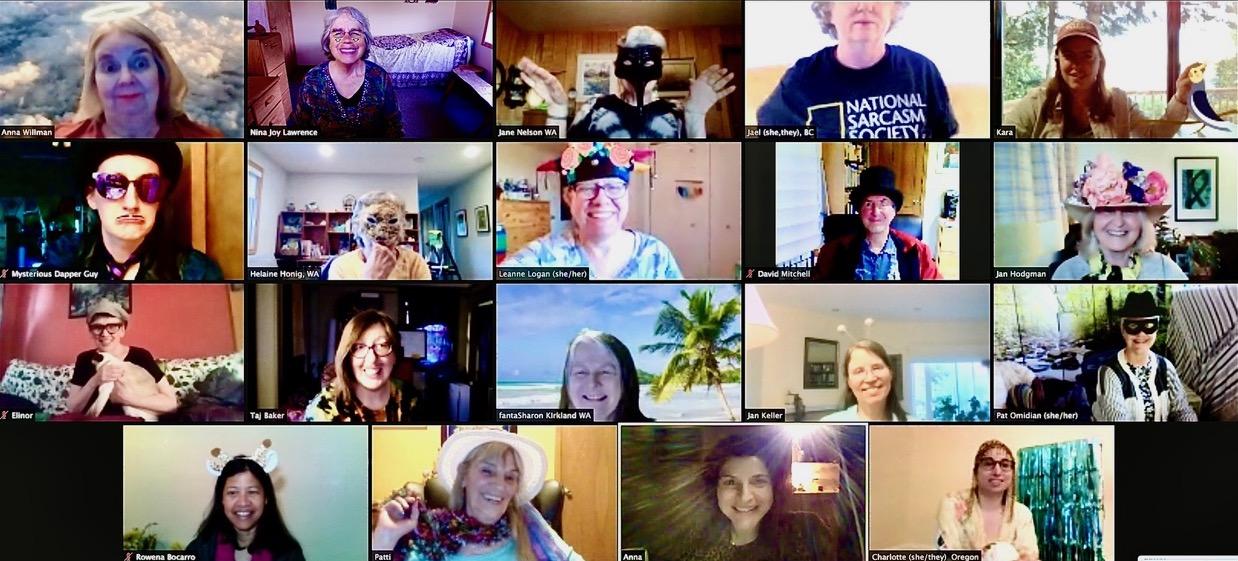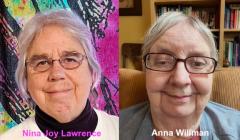Open Space Technology is a way to organize an event which is particularly suited to Focusers. The Northwest Focusers Gathering has organized itself this way for many years, and the Midwest Focusing Gathering, which began in 2018, and has recently ended its run, was inspired to use the same technology in their gatherings. The process of Open Space Technology allows for minimal advanced program planning, relying on just a general outline for the weekend. Then, on the first afternoon of the Gathering, the group cooperatively structures the weekend.
We asked Anna Willman and Nina Joy Lawrence how they implement Open Space Technology in their planning of the Northwest Gathering, and this article is gleaned from descriptions they shared with us.
Organizing the weekend schedule
To begin the process of organizing the program, they create two wall charts with a schedule for Saturday and Sunday, showing all available meeting rooms, meal times, and any time that is already planned. Some times are pre-planned for individual Focusing partnerships, free time, and a few all-group activities. The rest of the time is divided into open blocks. The time for bringing the group together to organize the program is typically done Friday afternoon at 4:00pm. This timing works best because it is before dinner, but late enough that most participants will have arrived.
With the wall charts in place, all participants gather in a circle and begin with a guided attunement. All are invited to gently set aside the hassle and nervous energy associated with travel and arrival at the site, bringing attention to this space, this room, this moment. All are asked to take some time to sense what they are wanting for this weekend – what they want to share and what they’d like to receive – and how they might make that happen.
People then introduce themselves and share how they want to participate. If they want to make a presentation or lead an activity, they can give a brief description of that project. Everything people bring has to do with Focusing, is crossed with Focusing, or uses Focusing to explore the subject.
Consistent with the ethos of Focusing, any individual can pass if they like, saying nothing. Once everyone has had a chance to share, the offer is made again, because something new might now have emerged. Someone who thought they had no desire to offer something might have a new idea, inspired by others’ proposals or wantings, or simply having had the time and space for their own wanting to fully form.
The posted schedule, organized like a chart, is then explained to make sure that it is clear what times are available. The various meeting rooms are described - whether they are large and empty, suitable for activities involving lots of movement, or outfitted with tables for arts and crafts, or small and cozy for a discussion group, or near soap and running water for a messy activity.
People are then invited to write their ideas on a sticky note and place them on the wall chart in their preferred room and time slot. At this point, there is likely to be a bit of bargaining and trading as people find their activity in the same time slot as a presentation that they don’t want to miss. It is surprising, however, how fast this part of the exercise is accomplished, and always with good cheer and lots of effort going into accommodating each other’s needs.
Once this is completed, the charts are then moved to a central location, ideally near the dining area. Participants are encouraged to photograph the charts so they will remember when and where they want to go.
For any remaining available slots, participants are welcome to add another activity, or presenters who need to change their space or time slot can simply move their sticky note to an open slot. However, any additions or changes made after the schedule is completed need to be announced at the next meal time in order to minimize confusion and delays during the day.
With the process completed and the program set, the group moves through the weekend learning a lot, enjoying each other’s company and having fun.
The Midwest Focusing Gathering followed this same basic format, and Mary Elaine Kiener wrote that it began to fulfill Bebe Simon's dream of bringing the Northwest Focusers Gatherings' "magic" to the Midwest. Over the next 6 years, that dream became a reality. The inaugural Midwest Focusers Gathering was in fall 2018, near the shore of Lake Michigan. The venue, Tower Hill, had held a special place in Bebe's heart for many years. The Midwest Gathering moved to online with the pandemic, then took a break. They were able to meet in person again for the last time in 2023, but chose, due to a number of circumstances, to end their annual event. Mary Elaine noted the importance of the four guiding principles of Open Space Technology (originally created by Harrison Owen):
Whoever comes is the right people.
Whatever happens is the only thing that could have.
When it starts is the right time.
When it’s over, it’s over.
Though the Midwest Gathering has ended, the Northwest Gathering lives on, now in its 17th year. It will take place May 17-19, 2024, surrounded by 12 acres of natural beauty in Dash Point, Washington state in the USA. The last day to register is April 1, and all are welcome. If you'd like to attend, the details can be found here.
Anna and Nina Joy have been enjoying the Northwest Focusers Gathering over the past 17 years, often as part of the organizing team, and always attending if at all possible. They reside in Oregon, US. Anna has written extensively about Focusing used in Community Wellness, is a TIFI Certified Trainer, and also on the Board of Focusing Initiatives International. Nina Joy is a TIFI Coordinator, currently on the teaching team for a Community Wellness Focusing Certification course.




